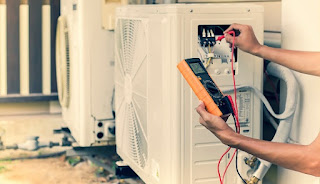How to Fix Industrial Heaters: The Essential Guide for Industrial HVAC Repair
When it comes to your industrial HVAC system, you know that maintenance is key to keeping it running at peak performance. With the fluctuating temperatures and changing humidity that are typical in an industrial space, your HVAC system will experience wear and tear sooner than other properties. That’s why you need to have a maintenance plan in place from the get-go. You also need an HVAC repair pro on call 24/7 so you can get quick access to any issues before they become bigger problems down the road. If you own or manage an industrial building, then this article is for you! Read on for tips on how to fix common industrial HVAST problems — from leaking pipe fittings to faulty motors — with as little hassle as possible.
What Are the Most Common Causes of an HVAC Breakdown?
The first thing you’ll need to know when dealing with an industrial HVAC breakdown is the most common causes of failure. You’ll also want to know how to recognize the signs of potential issues, such as a leaky pipe, to prevent them from escalating into bigger problems. And lastly, you’ll want to know what you can do to prevent breakdowns from occurring in the first place. It may seem like a lot to take in, but each of these issues can be prevented with a little diligence. So before you tackle each of these issues, take a step back and review what you’ve learned so far. You’ll be glad you did.
Be Prepared for a Breakdown
If you’re in the habit of performing routine maintenance and repairs on your industrial HVAC system, then you’re far more likely to avoid a breakdown altogether. But even if you don’t, you can be prepared for one to occur. It’s not uncommon for a breakdown to occur during the middle of the night. While you may not be able to fix the issue immediately, you can certainly prevent it from becoming a bigger issue by being prepared. While you can’t predict when your HVAC system will fail, you can prepare yourself for the signs that something may be wrong. If your system is making a loud noise — which could indicate a leak or a problem with the heat exchanger — you should immediately contact your local HVAC repair business.
Plan Ahead for Repairs
If you’ve been performing routine maintenance and repairs on your industrial HVAC system, then you’ll have a much better idea of what issues may arise. And when they do, you’ll be prepared to respond quickly and efficiently. A common problem caused by poor maintenance or a failure in the piping system is a leaky pipe. Industrial Heater Repair / Service Pipe joints and connections can become leaky over time, especially if they are not regularly maintained. A faulty compressor is another common cause of a breakdown in industrial HVAC systems. A failed compressor could be caused by a number of issues, including a worn fan motor or a faulty electrical connection. When a breakdown does occur, don’t panic. Be calm, assess the situation and make a plan of action. If you’re not sure what you should do, contact a local HVAC repair company who can help you out.
Check Pipe Fittings and Fans for Tightness
Pipe joints and fittings are pieces that connect components such as valves and heat exchangers. Because they are frequently hidden, it’s easy to overlook them. But if they do become leaky, it can cause serious damage to your building’s A, B and C systems. Pipe joints and fittings are also a common cause of HVAC breakdowns. To check for any issues, take a look at the pipe joints and fittings in your system. If any of them look loose, rusted or worn, tighten them up immediately. In many cases, the cause of a leaky pipe fitting is the same issue that causes the pipe to become leaky. A leaky pipe fitting may be the result of a leaky pipe, a faulty pipe joint or a worn fan. So it’s always important to check the source of any issues before diving into repairs.
Test Drive Your Heating and Cooling Equipment
If you’re lucky enough to have an outdoor unit, then you can perform a “test drive” by continuously running the compressor for a few hours. Within that time frame, the outdoor unit will reach its highest possible temperature, which is an indication of any potential issues. Another good practice to perform before any repairs are made is to perform a random reheat. Reheating random sections of your building is a great way to identify any potential problems in your HVAC system. And while you can perform a random reheat with a portable unit, you may want to invest in a fixed-location unit if you’re planning on performing a lot of repairs.
Final Words:
If you own or manage an industrial building, then this article is for you! The likelihood of your HVAC system breaking down is high. Keeping your system in good working order will prevent many types of breakdowns and ensure the safety of your employees. So make sure you’re prepared with tips on how to fix common industrial HVAST problems and aware of the signs of potential issues.



Comments
Post a Comment